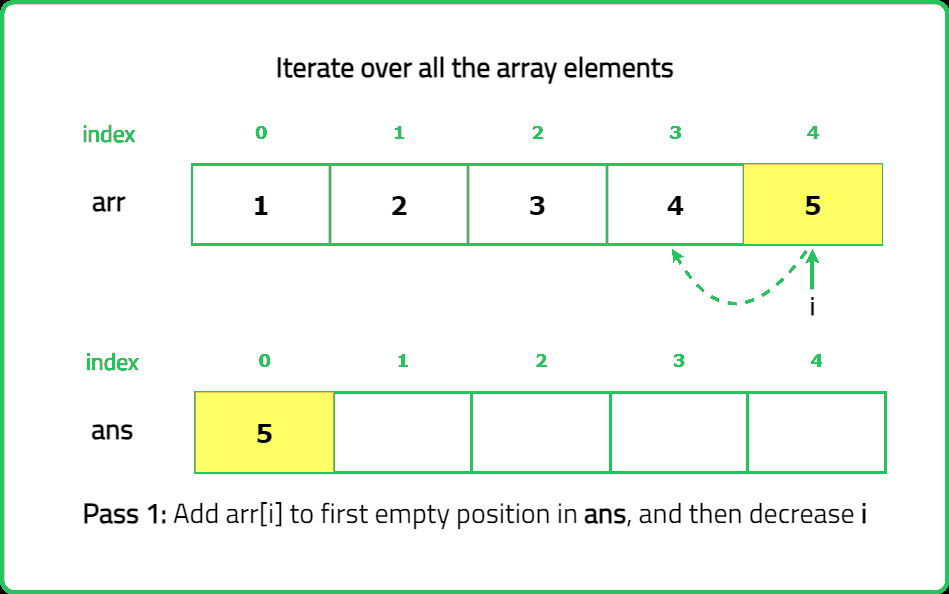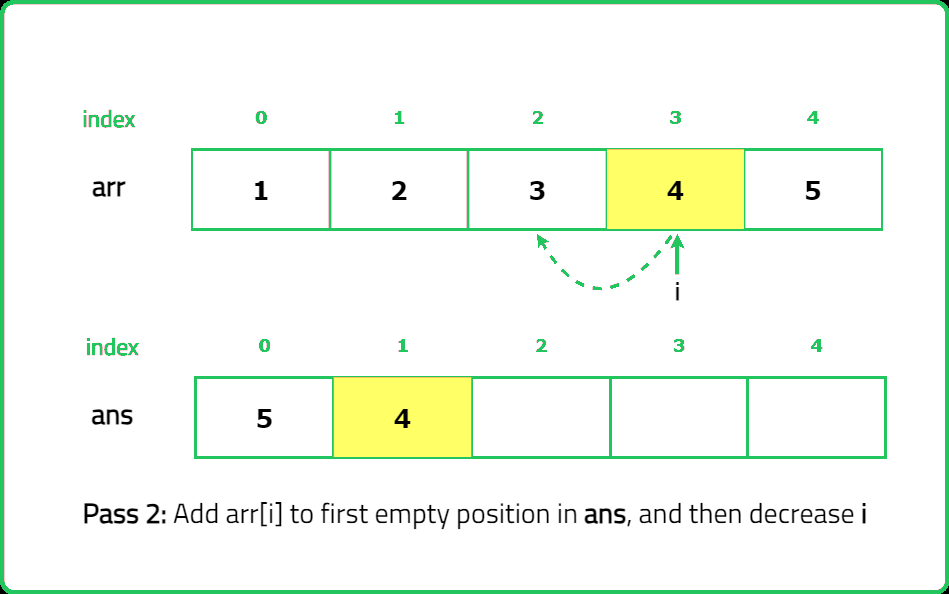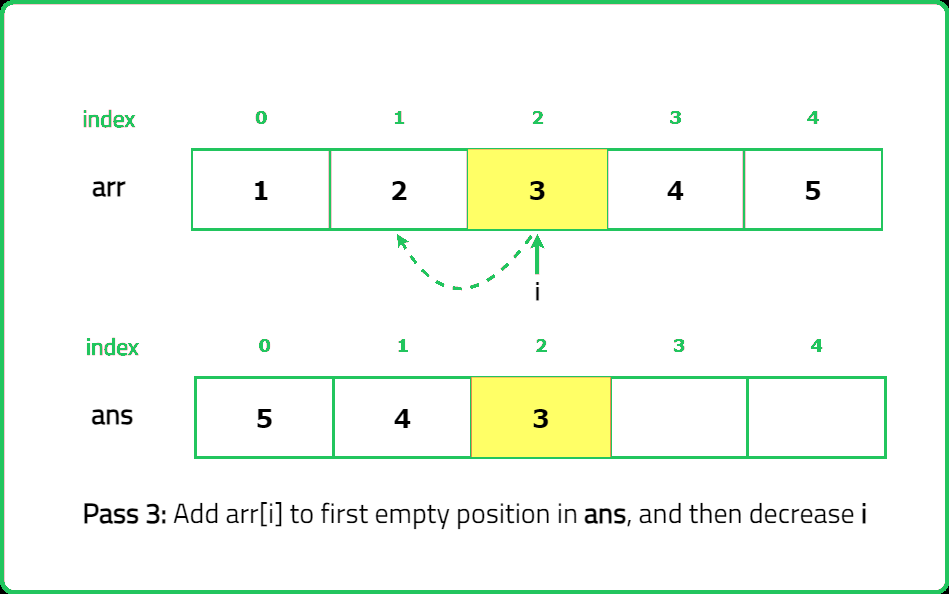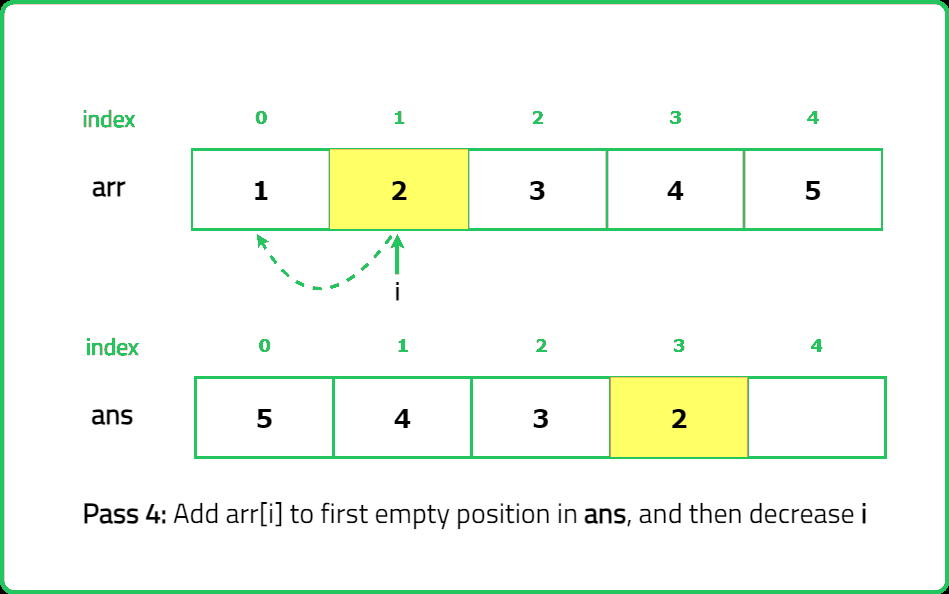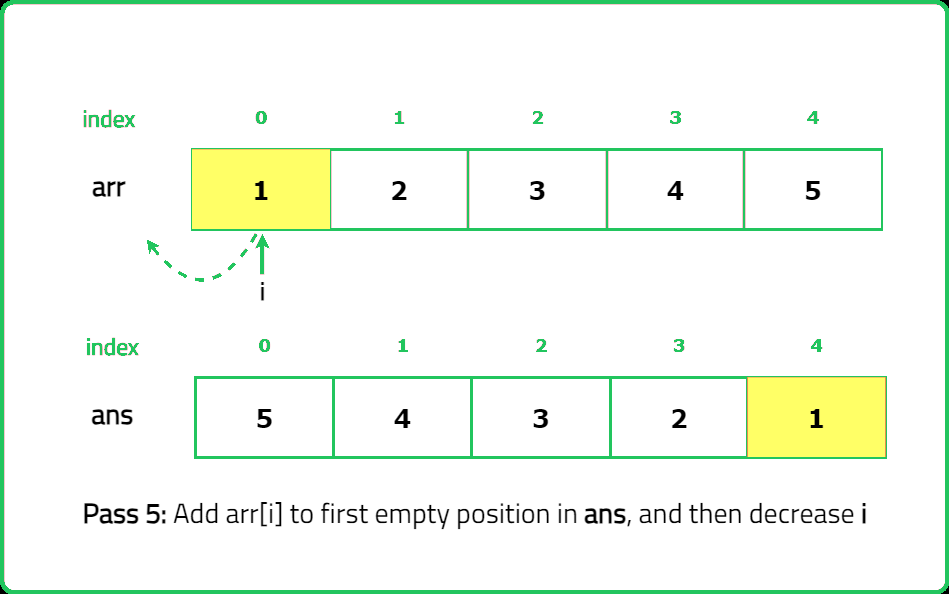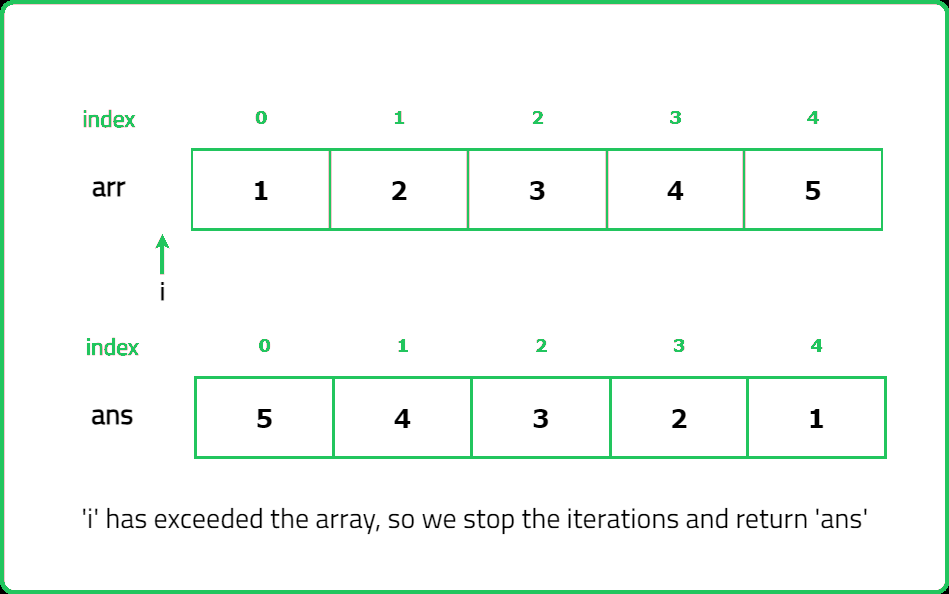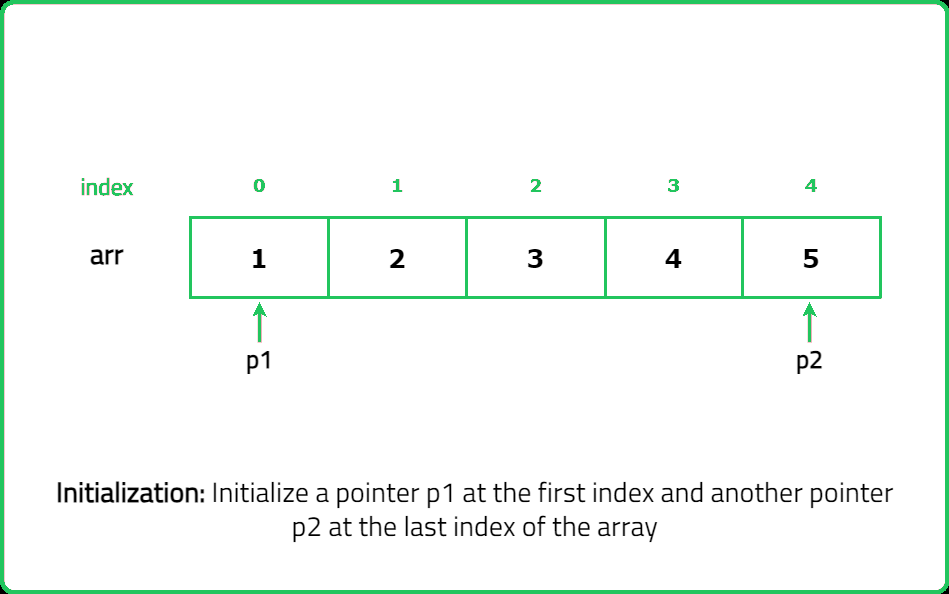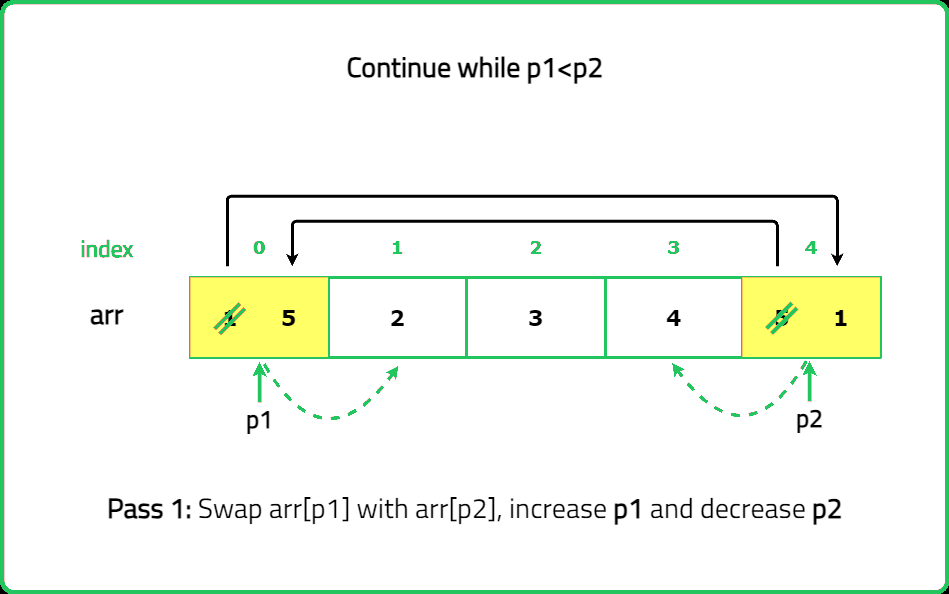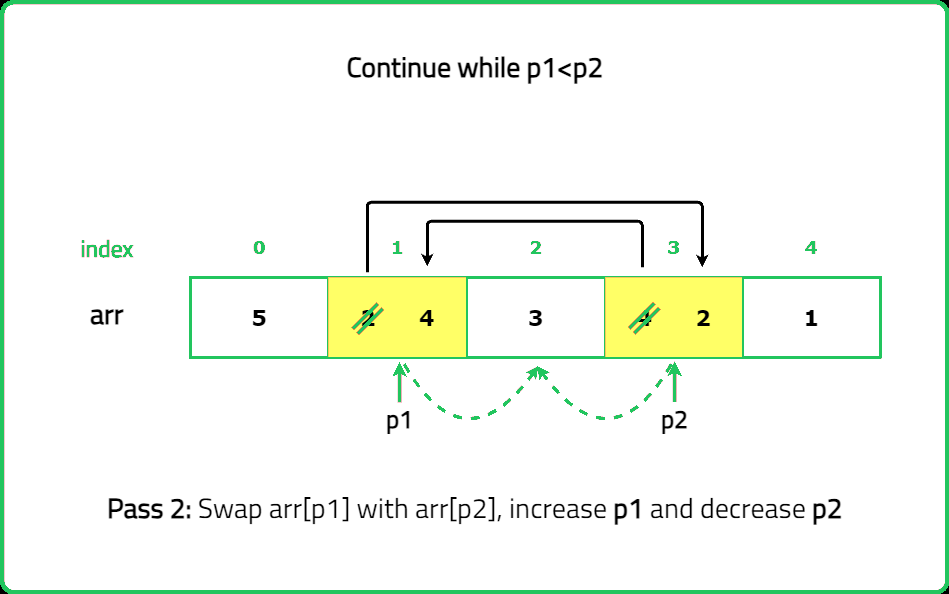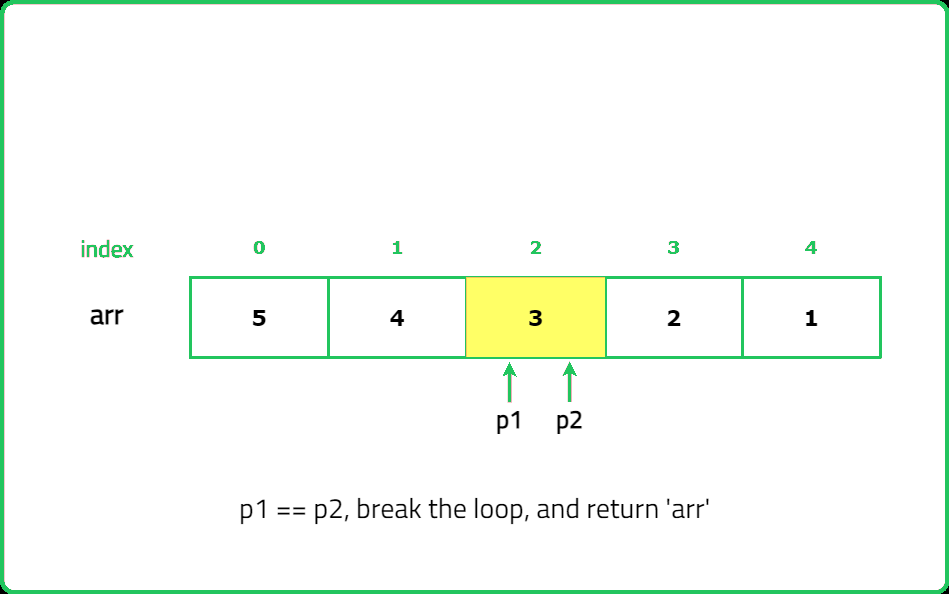12345678910111213141516171819202122232425262728293031323334353637383940414243444546
#include <bits/stdc++.h>
using namespace std;
class Solution {
public:
// Function to reverse array using two pointers
void reverse(int arr[], int n) {
int p1 = 0, p2 = n - 1;
/* Swap elements pointed by p1 and p2
until they meet in the middle */
while (p1 < p2) {
int tmp = arr[p1];
arr[p1] = arr[p2];
arr[p2] = tmp;
p1++;
p2--;
}
// Return
return;
}
};
// Function to print array
void printArray(int arr[], int n) {
for (int i = 0; i < n; i++) {
cout << arr[i] << " ";
}
cout << endl;
}
int main() {
int n = 5;
int arr[] = {5, 4, 3, 2, 1};
// Creating instance of Solution class
Solution solution;
cout << "Original array: ";
printArray(arr, n);
// Function call to reverse the array
solution.reverse(arr, n);
cout << "Reversed array: ";
printArray(arr, n);
return 0;
}
1234567891011121314151617181920212223242526272829303132333435363738394041424344
import java.util.Arrays;
class Solution {
// Function to reverse array using two pointers
public void reverse(int[] arr, int n) {
int p1 = 0, p2 = n - 1;
/* Swap elements pointed by p1 and
p2 until they meet in the middle */
while (p1 < p2) {
int tmp = arr[p1];
arr[p1] = arr[p2];
arr[p2] = tmp;
p1++;
p2--;
}
// Return
return;
}
}
class Main {
// Function to print array
public static void printArray(int arr[], int n) {
for (int i = 0; i < n; i++) {
System.out.print(arr[i] + " ");
}
System.out.println();
}
public static void main(String[] args) {
int n = 5;
int[] arr = {5, 4, 3, 2, 1};
// Creating instance of Solution class
Solution solution = new Solution();
System.out.print("Original array: ");
printArray(arr, n);
// Function call to reverse the array
solution.reverse(arr, n);
System.out.print("Reversed array: ");
printArray(arr, n);
}
}
123456789101112131415161718192021222324252627282930313233343536
class Solution:
# Function to reverse array using two pointers
def reverse(self, arr, n):
p1 = 0
p2 = n - 1
# Swap elements pointed by p1 and
# p2 until they meet in the middle
while p1 < p2:
tmp = arr[p1]
arr[p1] = arr[p2]
arr[p2] = tmp
p1 += 1
p2 -= 1
# Return
return
# Function to print array
def printArray(arr, n):
for i in range(n):
print(arr[i], end=" ")
print()
if __name__ == "__main__":
n = 5
arr = [5, 4, 3, 2, 1]
# Creating instance of Solution class
solution = Solution()
print("Original array: ", end="")
printArray(arr, n)
# Function call to reverse the array
solution.reverse(arr, n)
print("Reversed array: ", end="")
printArray(arr, n)
123456789101112131415161718192021222324252627282930313233343536
class Solution {
// Function to reverse array using two pointers
reverse(arr, n) {
let p1 = 0, p2 = n - 1;
/* Swap elements pointed by p1 and p2
until they meet in the middle */
while (p1 < p2) {
let tmp = arr[p1];
arr[p1] = arr[p2];
arr[p2] = tmp;
p1++;
p2--;
}
// Return
return;
}
}
// Function to print array
function printArray(arr, n) {
console.log(arr.join(" "));
}
const n = 5;
const arr = [5, 4, 3, 2, 1];
// Creating instance of Solution class
let solution = new Solution();
console.log("Original array: ");
printArray(arr, n);
// Function call to reverse the array
solution.reverse(arr, n);
console.log("Reversed array: ");
printArray(arr, n);

